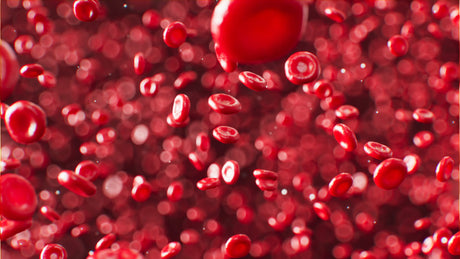How Red Light Therapy Works
Cellular Energy Production
At the heart of red light therapy is the idea of photobiomodulation — a process where red or near-infrared light stimulates the cells, particularly the mitochondria, to produce more ATP (adenosine triphosphate). ATP is the energy currency of the cell, and more of it means better cellular function.
The Role of Mitochondria
Red light wavelengths, typically ranging between 600–850 nanometers, penetrate the skin and stimulate mitochondrial activity. This process promotes tissue repair, reduces inflammation, and boosts collagen production — making it popular among athletes, dermatologists, and biohackers alike.
Wavelengths and Their Effects
Different wavelengths offer different benefits:
-
Red light (630-660nm): Best for skin rejuvenation, surface healing.
-
Near-infrared (810-850nm): Penetrates deeper, ideal for muscle recovery and joint pain.
Overview of Red Light Mats
What is a Red Light Mat?
A red light mat is a flexible device that you lie on, similar to a yoga mat but embedded with hundreds of red and near-infrared LEDs. It’s designed to deliver full-body therapy passively.
Common Features and Use Cases
-
Full-body coverage from neck to toes
-
Ideal for relaxation and recovery
-
Often combined with PEMF (Pulsed Electromagnetic Field) therapy
-
Hands-free, just lie down and relax
Types of Red Light Mats
-
Full-length mats for total body treatment
-
Mini-mats or pads for localized therapy
-
Mats with additional therapies like heat or vibration
Overview of Red Light Panels
What is a Red Light Panel?
Red light panels are upright, rectangular devices that emit powerful beams of red and near-infrared light. You stand or sit in front of them during a session.
Key Features and Usage
-
High light intensity (measured in mW/cm²)
-
Adjustable timers and settings
-
Used in standing or seated positions
Different Types of Panels
-
Small panels for targeted therapy
-
Mid-size panels for upper or lower body
-
Modular full-body systems for advanced users
Red Light Mat vs Red Light Panel: A Head-to-Head Comparison
| Feature | Red Light Mat | Red Light Panel |
|---|---|---|
| Coverage | Full body at once | Partial, unless using multiple panels |
| Intensity | Moderate | High intensity, deeper penetration |
| Convenience | Very portable and hands-free | Requires setup and positioning |
| Power Use | Lower | Higher wattage devices |
| Use Case | Relaxation, chronic pain, passive use | Targeted therapy, anti-aging, athletic recovery |
Therapeutic Benefits Comparison
Muscle Recovery
Red light panels shine here with their higher irradiance, delivering deep muscle penetration. However, red light mats also aid recovery — especially when used for longer sessions.
Skin Health
Both devices improve skin tone and texture. Panels have an edge due to light intensity, making them better for anti-aging and acne treatment.
Sleep and Mood
Mats promote relaxation due to their design. Lying down in a meditative state while bathed in red light helps release melatonin and reduce cortisol levels.
Inflammation and Pain Relief
Mats are fantastic for chronic pain sufferers due to the broad surface coverage. Panels, however, may be better for targeting localized inflammation.









